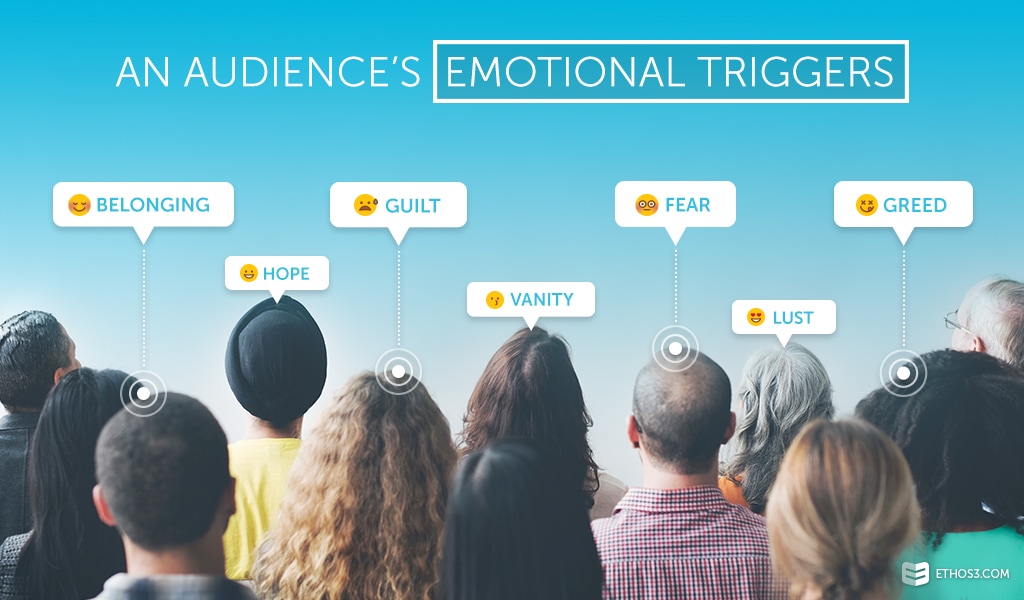Due to the current state of content marketing affairs, individuals are drowning in an ocean of content. Two million blog posts are published each day. That’s nearly equivalent to every person in Houston, TX writing an article. Not to mention the influx of social media messages and emails the population exchanges throughout the course of a day. For marketers and presenters alike, it has become increasingly difficult to cut through the clutter and create meaningful audience engagement. In a Convince and Convert article, Janice Kersh revealed the 7 emotional triggers she uses in her email campaigns. This concept prompted me to explore how presenters could implement the same emotional triggers to compel a presentation audience.
Setting the Emotional Scene Through Objective
Just as Janice cautions, a marketer can’t select the appropriate emotional trigger without establishing the purpose of the campaign. A presenter won’t use the most effective trigger if he or she doesn’t first determine the presentation objective.
Common Objectives for Presentations
Although topics and subject matter differs from one industry or field to the next, all business and professional presentations have common objectives:
- Explain a product, concept, or idea
- Persuade to purchase or meet
- Increase product sales
- Educate about benefits and advantages
- Demonstrate differences in features from competition
- Build awareness of the company or brand
- Show how a product or service works
- Promote a product or idea
- Obtain investment or funding
- Provide valuable takeaways and content
- Close business deals
- Inspire an audience to action
*This is by no means a comprehensive list.
Emotions to Consider Triggering

Once you’ve nailed down your presentation objective, choose from one of the emotional triggers below:
Belonging: Presentations oftentimes require large groups of individuals gathering to listen to a message. Appeal to the human need to belong or feel welcomed.
Hope: Through the creation of a likable character, inspire your audience to expect a particular ending to your presentation message.
Guilt: Maybe there is an intrusive issue circulating around your industry. Stir feelings of guilt in your audience members to enhance their commitment to help out.
Vanity: Give your audience credit for their role in whatever your presentation topic.
Fear: Motivate listeners to act by detailing those consequences of inaction.
Lust: Paint a scene or envision a magnificent future that your audience cannot reject.
Greed: Perhaps it’s status they desire. Or money they wish to attain.
Your Presentation Structure
Your presentation outline should have 4 parts: a story, problem, solution, emotional trigger, and call to action. Create a conversation through the details of your story. Empathize with the audience when describing the primary problem. Tie this to the emotional trigger, which should be conveyed so well that it appeals to you too. Next, introduce your solution, followed by a relevant call to action.
For more presentation tips and tricks, review the resources below:
How to Create an Audience-Focused Presentation